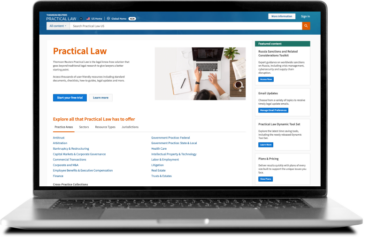Enjoy more HR treats than tricks
A true Halloween scare for any human resources (HR) department involves the kinds of missteps that result in expensive litigation and time-consuming government audits. Perhaps even more frightening is the impact of negative PR and poor employee morale that may follow. Employees are a company’s most valuable resource, and failure to manage the employment relationship properly can come back to haunt employers.
By conducting a regular HR audit, employers can eliminate common problems, protect the company’s future, and improve employee morale. Some nightmares that an HR audit can resolve include:
Poor communication with employees
Creating, circulating, and updating employee handbooks can improve employee communication. Quality handbooks also encourage legal compliance and answer employee questions. To learn more about employee handbook drafting, see Practice Note, Employee Handbooks: Best Practices.
Gaps in protections for trade secrets and confidential information
Shoring up policies and practices designed to protect confidential or trade secret information makes it harder for employees to misuse or misappropriate it. To learn about best practices for protecting valuable company information, see Practice Note, Protection of Employers’ Trade Secrets and Confidential Information.
Failure to adhere to wage and hour laws
Ensuring proper classification of exempt employees and independent contractors reduces the risk of government audits and lawsuits. Moreover, understanding the growing list of jurisdictions that require pay disclosure is a new vital part of wage and hour compliance. For the latest, see Practice Note, State and Local Pay Disclosure Requirements in Job Postings Chart: Overview.
Inappropriate I-9 practices and procedures
Promoting I-9 compliance helps employers avoid hefty fines and penalties. To better understand I-9 requirements, see Completing Form I-9 for Employees Checklist.
 | Human Resources Audit Toolkit See more resources to assist in conducting an audit of an employer’s human resources practices. |
Flawed hiring practices
Eliminating probing and unnecessary questions from interviews that could be construed as discriminatory (for example, asking about protected class status) avoids the appearance of discrimination and mitigates litigation risks. Promote best practices with Avoiding Discriminatory Questions in Interviews Checklist.
Inattention to discrimination, harassment, and retaliation
Sound training, policies, and investigations help eliminate these significant risks and promote a better work environment. For example, train employees with Standard Document, Discrimination and Harassment in the Workplace: Presentation Materials.
Poorly administered discipline and investigations
Avoiding errors in this area helps strengthen a legal defense if the issue results in litigation. Ensure your organization makes the right decisions with Best Practices for Employee Discipline Checklist.
Inappropriate handling of accommodation requests
Accommodation requests have always been nuanced, but they became even more so in the COVID and post-COVID era. Take the right approach to the interactive process with Practice Note, Interactive Process Under the ADA.
Social media gaffes
Providing structure and guidance for social media practices keeps employers from facing embarrassing problems, both internally and externally. Set employee expectations and avoid the worst-case scenario with Standard Document, Social Media Policy (US).
Health and safety shortcomings
As the pandemic taught us, keeping employees safe is key to any company’s success. Keep employees protected and promote corporate compliance with the Health and Safety in the Workplace Toolkit.
Unlawful leave policies and practices
Complying with leave laws keeps a significant area of legal exposure from becoming a costly lawsuit. A particularly murky area that needs careful HR attention is paid sick leave. Follow the latest developments in Paid Sick Leave State and Local Laws Chart: Overview.
All of these HR issues present a host of scares, but leveraging Practical Law resources and tracking legal developments will help minimize those fears.
For more information on mitigating risk and enjoying more HR treats than tricks, see Human Resources Audit Toolkit.








